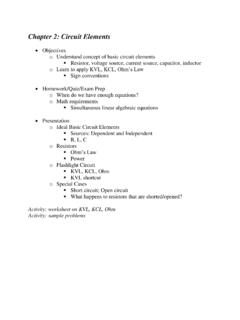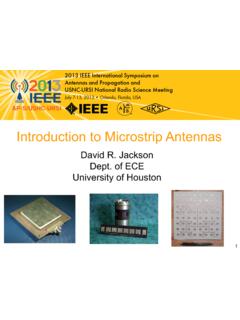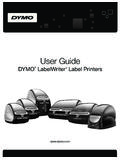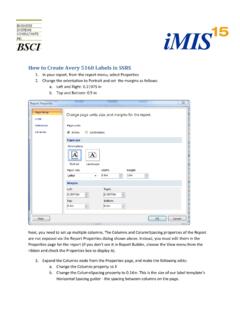Transcription of LTSpice Basic Tutorial - University of Houston
1 LTSpice Basic Basic TutorialIndex: LTSpice Basic : :. Beginanewcircuit fromthe filemenu,or clickonthe"NewSchematic" : LTSpice Basic ' ,youcan pressthe'g'key,or usethegroundicon,,or getitfromthe'Edit' 'tsurewheretoputit, : Thenextthingthatyouhavetodoisgetsomeoral lofthepartsyouneed. Thiscanbedoneby clickingontheiconfor aspecificcomponent;(Thisisgoodforcommonc omponentssuchasresistors,capacitors,etc. ) clickingonthe'component'button; pressing"F2";or,or goingto"Edit"andselecting" " Oncethisboxisopen, Basic TutorialPage4 Somecommonpartsare: res-resistor cap-capacitor ind-inductor diode-diode voltage-anykindofpowersupplyorbatteryAny thingin[ ]isalibrary,whichcontainsmanyparts. Torotatepartssothattheywillfitinyourcirc uitnicely,press"Ctrl+R" (or'Mirror')thepart,press"Ctrl+E". Uponselectingyourparts,clickwhereyouwant themplaced(somewhereonthegreypagewiththe dots).
2 Don'tworryaboutputtingitinexactlythe rightplace, , youwanttostopplacingaparticulartypeofpar t,right-clickorpress'Esc'. : You shouldhavemostofthepartsthatyouneedatthi spoint. Now,allyoudoisputthemintheplacesthatmake themostsense(usuallyarectangleworkswellf or simple circuits).Tomoveparts,clickonthe'move'ic on,andthenyoumayselectpartsanddragthemwh ere youwantthem.(Whenyouhaveapartselectedfor amove,you canrotateorreflectitaswell.) Ifyouhaveanypartsleftover,justselectthem andpress"Delete". : Nowthatyourpartsarearrangedwell,you'llha vetoattachthemwithwires. Gouptothetoolbarand selectthe"DrawWire"button "F3"or goto"Edit"andselect"DrawWire".,or Withthepencillookingpointer,clickonone endofapart,whenyoumoveyourmousearound,yo ushouldsee Repeatthisuntil yourcircuitiscompletelywired. Ifyouwanttomakeanode(tomakeawiregomoreth enoneplace),clicksomewhereonthewireandth enclick tothepart(or theotherwire).
3 Or you asquareblockwhen3ormorewiresconnectatapo int. Toget ridofthepencil, : Youprobablydon'twanttokeep thenamesC1,C2etc.,especiallyifyoudidn' ,rightclickonthepresentname(C1,orR1orwha teveryourpartis),thenaboxwillpopup(Enter NewReferenceDesignator),whereyoucantypei nthenameyouwanttheparttohave. Pleasenotethatifyoudoubleclickontheparto ritsvalue, : Ifyouonlywanttochangethevalueofthepart(i fyoudon'twantallyourresistorstobe1 Kohms),you canrightclickonthepart,(notthename),anda boxtitlebythepartname(suchas"Resistor") uformicroasinuF = Basic Labels: Theseareimportantifyouwanttouseryourowni dentifiersforpointsinthe networkwhereyouwanttodeterminevoltagesra therthanhavingtoworkwiththenodenumbersth atLTSpiceassigns. Toaddnetlabels, press"F4",or clickonthe"LabelNet"icon,or select"Edit/LabelNet" youdothis, awindowwillpopupwhereyouassignthelabelyo uwanttousefor : Tosavethecircuit, :onthetoolbaroranyothermethodyouwouldnor mallyusetosavefiles.
4 Toprint, Basic TutorialPage6 ClickontheSimulatebuttononthetoolbarorus ethe"Simulate/EditSimulationCmd" simulation: Youhavetohaveyourcircuitproperlydrawnand saved. Theremustnotbeanyfloatingpartson yourpage( ). Youshouldmakesurethatallpartshavethevalu esthatyouwant. Therearenoextrawires. Itisessentialthatyouhave : Enablewhatevertype(s)ofanlysisyouwantusi ng you chooseistheonewhichwillbedonewhenyou simulate. ClickontheSimulatebuttononthe toolbarorusethe"Simulate/Run"command. Itwillchecktomakesureyoudon' , : Gotothe"View" : Use"VisibleTraces"oronthetoolbartoselect allthetracesyouwant. Theaddtraceswindowallowsyoutochoosevarai oussignalsfromthecircuit, Basic TutorialPage7 Todeleteatrace,selectitstitleonthegrapha ndpress"Delete". : InVisibleTraces,therearefunctionsthatcan beperformed,thesewilladd/subtract(orwhat everyouchose)thelinestogether.
5 Selectthesignal(s)thatyouwishtohavedispl ayed. them,youcanuseLTSpice' : ClickonTextLabelontoptoolbar. Typeinwhatyouwanttowrite. ClickOK : Clickonthenameofthe traceyouwanttolookatandthenacursorwindow willappear, Youcan : Tosaveyourprobeyouneed togointothetoolsmenuandclickdisplay, : SelectPrintinEditoronthetoolbar Basic Thisisasimple, , Thetransientanalysisisprobablythemostimp ortantanalysisyoucanruninLTSpice, veryimportantparametersinthe transientanalysisare: StopTime. TimetoStartSavingData MaximumTimestep ( ) TheratioofStopTime:MaximumTimestepdeterm ineshowmanycalculationsLTSpicemustmaketo plot shouldusebeforerunningthesimulation,ifyo umakethe timesteptoosmall theprobescreenwillbeclutteredwithunneces sarypointsmakingithard toread,andtakingextremeamountsoftimefor ,attheoppositesideofthatcoinistheproblem thatifyousetthetimesteptoohighyoumightmi ssimportantphenomenonthatareoccurringove rvery yourcircuit.
6 Youcan set astepceilingwhichwilllimitthesizeofeachi nterval, , specifyotherwise,butthisstillwillallowyo utodecomposeasquarewavetoseeit' Basic TutorialPage9 TheACanalysisallowsyoutoplotmagnitudeand /orphaseversusfrequencyfordifferentinput sinyourcircuit. Type ofSweepIntheACanlysismenuyouhavethechoic eofthreetypesofanalysis: Linear, Octaveand ,ifyou choosedecadethenasampleofyourX-axismight be10Hz,1kHz,100kHz,10 MHz, howyourcircuitreactsoveraverylargerangeo ffrequencieschoosethedecadeoption. Younowhavetospecifyathowmanypointsyouwan tLTSpicetocalculatefrequencies, ,overwhatrangeoffrequenciesdoyouwanttosi mulateyourcircuit. Numberofpoints StartFrequency TheDCsweepallowsyou todovariousdifferentsweepsofyourcircuitt oseehowitrespondstovariousconditions. Forallthepossiblesweeps, voltage, current, temperature,and parameterandglobalyouneedtospecifyastart value,anendvalue,andthenumberofpointsyou wishtocalculate.
7 Forexample youcan , youneed toindicatetoLTSpicewhatcomponentyouwisht osweep,forexampleV1orV2. AnotherexcellentfeatureoftheDCsweepinLTS pice,istheabilitytodoanestedsweep. Anestedsweepallowsyoutoruntwosimultaneou ssweepstoseehowchangesintwodifferentDCso urceswillaffectyourcircuit. Onceyou'vefilledinthemainsweepmenu,click onthe nestedsweepbuttonandchoosethesecondtypeo fsourcetosweepandnameit,also specifyingthestartandendvalues.(Note:Ins omeversionsofLTSpiceyouneedtoclickonenab lenestedsweep).Again you canchooseLinear,OctaveorDecade,butalso you canindicateyourownlistofvalues, LTSpicewillsimulatenoisefor Thetwotypesofnoiseare: Outputfornoiseontheoutputsand Inputfornoiseontheinputsource. Type ofSweep(sameasforACanalysis) (sameasforACanalysis) StartFrequency(sameasforACanalysis) StopFrequency(sameasforACanalysis) Touseinputnoiseyou need totellLTSpicewhereyouconsiderthe'input'i nyourcircuittobe,forexample,ifyourvoltag esourceislabelled'V1'.
8 ,including parametric fourier sensitivityLTSpice Basic "IndependentVoltagSource"window. (none) , ,theparametersare: ACAmplitudewhichisthepeakvalueofthevolta ge. ACPhasewhichisthephaseangleofthevoltageF or atransientanalysis,theparametersare: DCoffsetistheDCoffset settozeroifyouneedapuresinusoid. Amplitudeistheundampedamplitudeofthesinu soid; ,thepeak valuemeasuredfromzero noDCoffsetvalue. FreqisthefrequencyinHzofthe sinusoid. tozero forthenormalsinusoid. Thetaisthedampingfactor.(Notthephase angle!)Also setthis tozero for ;thetaisthedecayconstantin1/seconds. to90ifyouneedacosinewaveform. ,LTSpicetakesittobe asinesource,soifyouwanttosimulateacosine waveyouneed toadd(orsubtract)a90 setbydefaultto0 LTSpice Basic TutorialPage11 PULSE isoftenused foratransientsimulationofacircuitwherewe wanttomakeitactlike frequency responsestudybecauseLTSpiceassumesitisin thetimedomain,andthereforeyourprobeplotw illgiveyouinaccurateresults.
9 Vinitialisthevaluewhenthepulseisnot"on." Soforasquarewave,thevaluewhenthewaveis'l ow'. apulsedcurrentsource,theunitswouldbe"amp s"insteadof"volts." Vonisthevaluewhen thepulseisfullyturned'on'.Thiscanalsobez eroornegative.(Obviously,V1andV2shouldno tbeequal.)Again,theunitswouldbe"amps"ift hiswereacurrentpulse. ,butnotnegative. Triseistherise , Tfallisthefalltimeinsecondsofthepulse. Tperiodistheperiodandisthetotaltimeinsec ondsofthepulse. TheEXPtypeofsourceisactuallya Basic TutorialPage12 TheSFFM(SingleFrequencyFM)typeofsourceis actuallya (Piece-WiseLinear) ThePWL sourceisaPieceWiseLinearfunctionthatyou can youcanuseasmanypointsasyouwant,you cancreateaverycomplexwaveformThissourcet ypecanbe avoltagesourceoracurrentsource. requiredparametersaretwo-dimensionalpoin tsconsistingofatimevalueandavoltage(orcu rrent) ,butthetimevaluesmustbeinascendingorder, Basic TutorialPage13 ThePWL Foranyofthepreviousdiscussedvoltagesourc es, thingthatshouldbementioned;currentsource sinLTSpiceget , , circuitbackwardswithseeminglyincorrectpo laritieswillgivethecorrectresults.
10 Aninterestinglittlefeatureunderthemarker smenuistheabilitytoaddmarkerstoyourcircu itsoyoucan seewherethecurrentandvoltagehaveimaginar yvaluesinthe circuit, Fil










